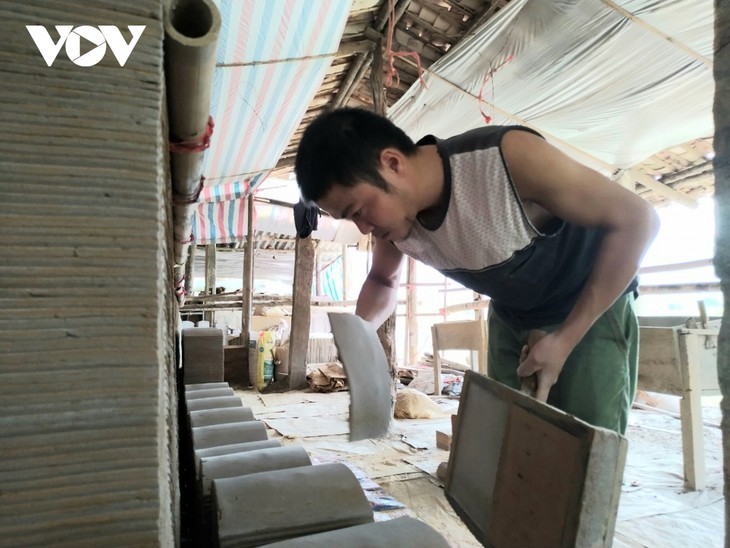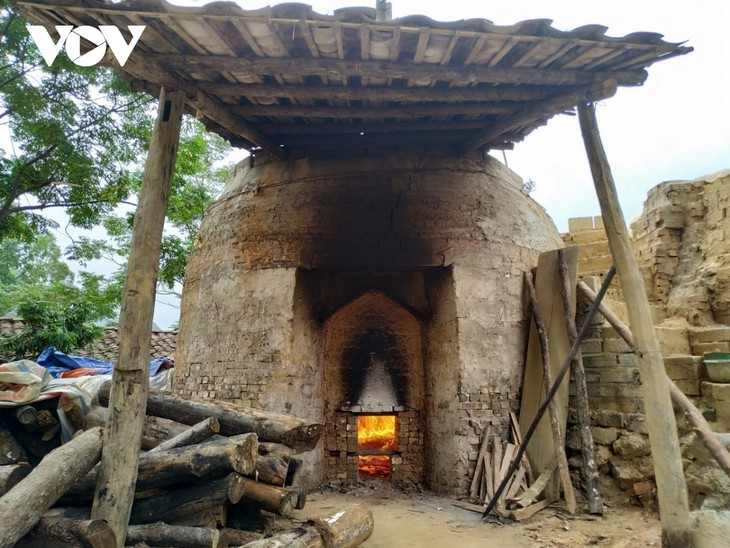(VOVWORLD) - The Tay and Nung ethnic people in Lang Son province are famous for the craft of making yin-yang tiles. They are trying to preserve their trade in the face of competition from other roofing products such as fibre cement sheets.
 The yin-yang tile craft in Lang Son province. The yin-yang tile craft in Lang Son province. |
Yin-yang tiles are the traditional roofing materials for the thatched houses of the Tay and Nung in Lang Son province. About 50 Tay and Nung households in Quynh Son commune, Bac Son district, have been involved in the tile craft for more than a century.
Yin-yang tiles are heat-resistant. They keep the house warm in winter and cool in summer. Many people living in cities also prefer to roof their houses with yin-yang tiles.
Hoang Cong Ngoc of Long Dong commune says he has been making yin-yang tiles for 60 years.
“Our ancestors called them yin-yang tiles because alternate tiles face up and down. The Tay live in thatched houses and only use yin-yang tiles. The tiles are light, water-proof, and heat-proof,” Ngoc said.
 Ying-yang tiles are shaped before being fired in a wood kiln. Ying-yang tiles are shaped before being fired in a wood kiln. |
The Tay use clay from wet rice fields to make the tiles. The clay is kneaded with water to remove impurities and left to dry in a big rectangular mold. The rectangle of clay is cut into pieces one centimeter thick to put into wooden molds for shaping. The shaped tiles are dried in the sun for 1-2 months and then fired in a kiln for 10 days. Each family has its own way of coloring the tiles.
“There is a knack to arranging the tiles in a round kiln to avoid cracking and breaking. We increase the temperature gradually by watching the color of the smoke change from white to yellow. When the color of the kiln walls changes to silver, we decrease the temperature,” Ngoc said.
A kiln can fire about 10,000 tiles, enough to roof a three-compartment house.
There are now hundreds of types of roofing materials, but yin-yang tiles have kept a foothold in the market.
 A kiln to fire ying-yang tiles A kiln to fire ying-yang tiles |
Hoang Cong Hoa, Chairman of the People’s Committee of Long Dong commune, said: “The tile craft village has organized vocational classes for young people with the support of the local authorities, craft households, and old artisans. One problem is a lack of material because the quality of the local soil has degraded.”
Duong Hong Hanh, deputy head of Bac Son district’s Information and Culture Office, said they have plans to develop craft villages and make Long Dong village a tourist site.
“We’ll increase publicity on yin-yang tiles, and work with the district People’s Committee and Trade Department to preserve the craft village and obtain funding. A community tourism plan will be developed.”